Phytocosmetics have recently become increasingly popular and in demand, because the use of folk remedies made from natural ingredients not only has a beneficial effect on the skin, but also allows you to maintain a beautiful appearance for decades.
Herbs for the face are selected depending on the nature of the problem, skin type and its condition. You can use them to make ice, tinctures, decoctions, add them as a component to masks, and even create creams and lotions using extracts. Every woman can take advantage of the healing power of herbs for the face, the main thing is to find her medicinal plants and use them correctly.
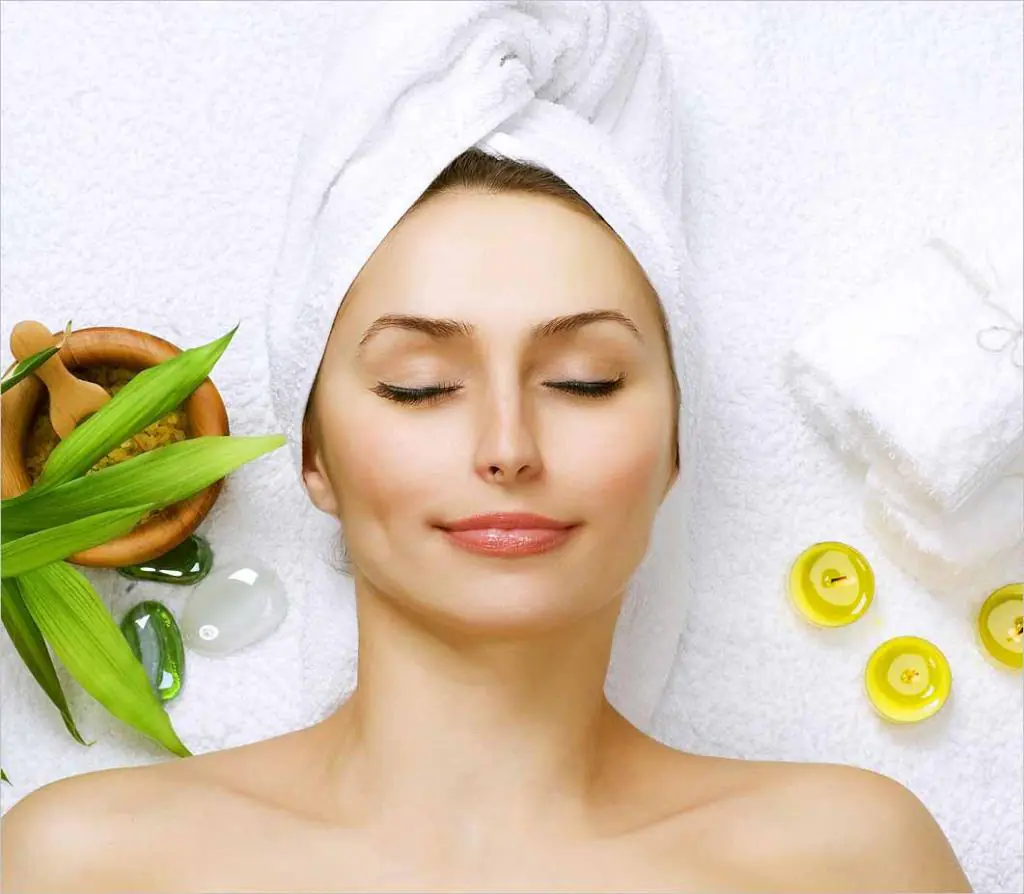
Types of phytocosmetics
The magic of nature is priceless, because here lies not only wisdom and strength, but also the root of longevity and beauty. In ancient times, women used herbs to take care of their bodies and maintain beauty.
Herbs for facial skin can be used in different ways, mixed with other components or used in their pure form. The result depends on the concentration of nutrients and the relationship with other components.
You also need to understand that the effect of natural components may manifest itself more slowly than chemical ones. Therefore, the products must be used regularly, alternating between different types to achieve the best effect. Cosmetologists distinguish the following types of phytocosmetics:
- Masks (effectively cope with expression wrinkles, can have a whitening effect and tighten the skin, and even out the complexion tone well).
- Steam baths (used to visually tighten pores and relieve redness on the face).
- Cosmetic ice (made from herbs for facial skin, tightens pores, removes expression lines and has a tightening effect). Use in the summer allows you to tone the skin.
- Hydroalcoholic extracts (have a therapeutic effect, can be prepared from herbs for acne on the face, remove blackheads, dry out oily and combination skin). They tone and soothe the skin. Both water and an alcohol solution can be used as the basis for preparing the extract.
- Creams (adding facial herbs makes them nourishing and vitamin-rich; they must be selected for each skin type). You cannot use day and night cream for different types.
- Compresses (help remove signs of fatigue and fight bags under the eyes, like ice with herbs for the face, can tighten pores and even out skin tone).
- Teas (consumed internally has a beneficial effect on the body and helps eliminate skin problems).
Phytocosmetics has a large arsenal of effective methods for combating skin problems. These are products with an effective spectrum of action available to everyone.
Cosmetic ice
This is a universal option for using any decoction and combination of herbs, thanks to which we can talk about improving the condition of the face. When compared with professional cosmetology, the procedure for using ice is reminiscent of rubbing the skin with liquid nitrogen.
In terms of usefulness, a natural, home-made product is not inferior to an expensive cosmetic procedure. And its regular use will give good results.
Cold tones the skin and makes it elastic, and herbal decoctions for the face will help solve any skin problem. Chamomile and celandine relieve irritation and redness on the skin, help get rid of inflammatory processes.
The use of mint, lemon balm and lovage whitens the face well and makes it velvety. If you add a few drops of tea tree oil to the decoction, you can get a good antiseptic, which is useful in the summer.
A decoction of linden and thyme soothes dry skin and cleanses combination skin. For a drying effect, you can use oak bark or caraway seeds. When choosing a proportion, you need to pay attention to the amount of liquid. The standard choice is 100 ml, but the dose can be increased depending on the number of cells on the form.
Ice can be stored for a long time, but it is advisable to brew fresh infusions every week so that the beneficial properties do not decrease. It is advisable to use it in the morning and evening before bed so that the skin is well saturated with herbs.
Herbs for cooking
To make ice, you need to take into account not only the desired effect, but also your skin type. The number of possible herbs in the composition depends on this.
For sensitive dry skin, it is better to add hop flowers and yarrow to the decoctions, which is gentle on the skin and has a calming effect. Dill, sage and parsley will also come in handy for treating dry skin. Rose petals and linden blossom will relieve redness and inflammation well.
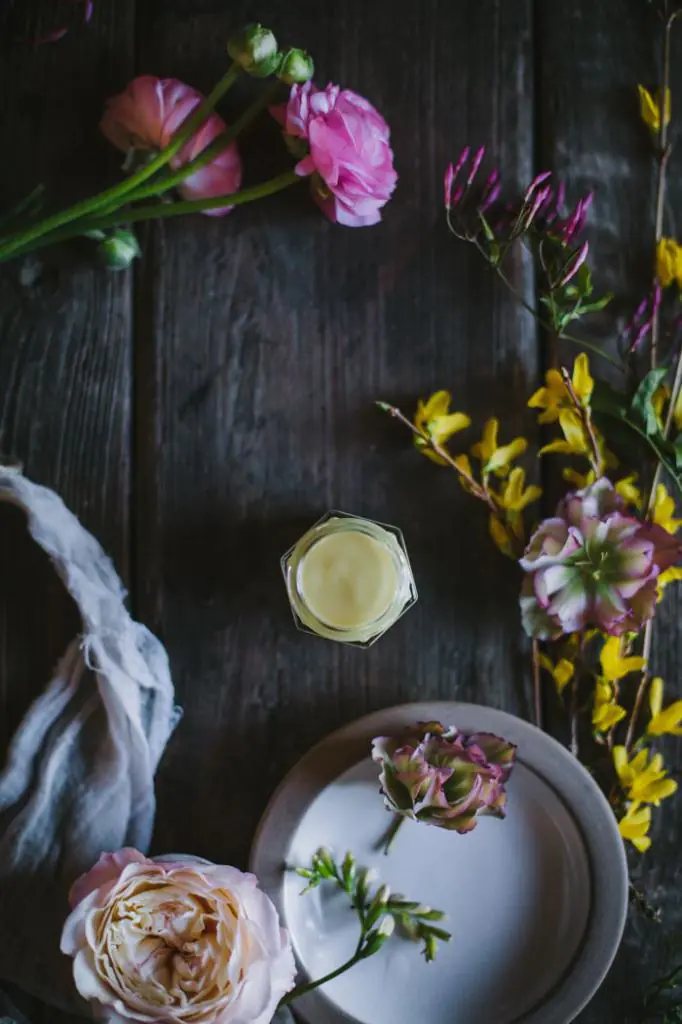
For oily skin, facial herbs such as chamomile, birch buds and leaves, St. John's wort, wormwood, peony, calendula with flowers, horsetail, celandine, and cinquefoil are used.
Since this skin type is characterized by large noticeable pores and an uneven complexion, to enhance the effect of herbs, you can use essential oils, which should be added a few drops to the decoction. Tea tree, lemon balm, orange, and broccoli oils will be effective.
For the combined and normal type, use valerian, violet, dill, sage, St. John's wort and plantain. Useful herbs for the face not only gently cleanse and relieve redness, but also tone the skin well and have a tightening effect.
Masks of youth
There is not a single woman who does not make masks. This method not only has a comprehensive effect on the skin and allows you to eliminate several problems at once, but also prolongs youth, making your cheeks taut and your skin even and smooth. The addition of various herbs enhances the beneficial effects of the masks.
To make a nutritious or moisturizing mixture, components are used that contain trace elements and phytoestrogens. They are found in calendula, licorice, clover, and Icelandic moss. Moisturizing masks are made based on plantain, burdock, and yarrow.
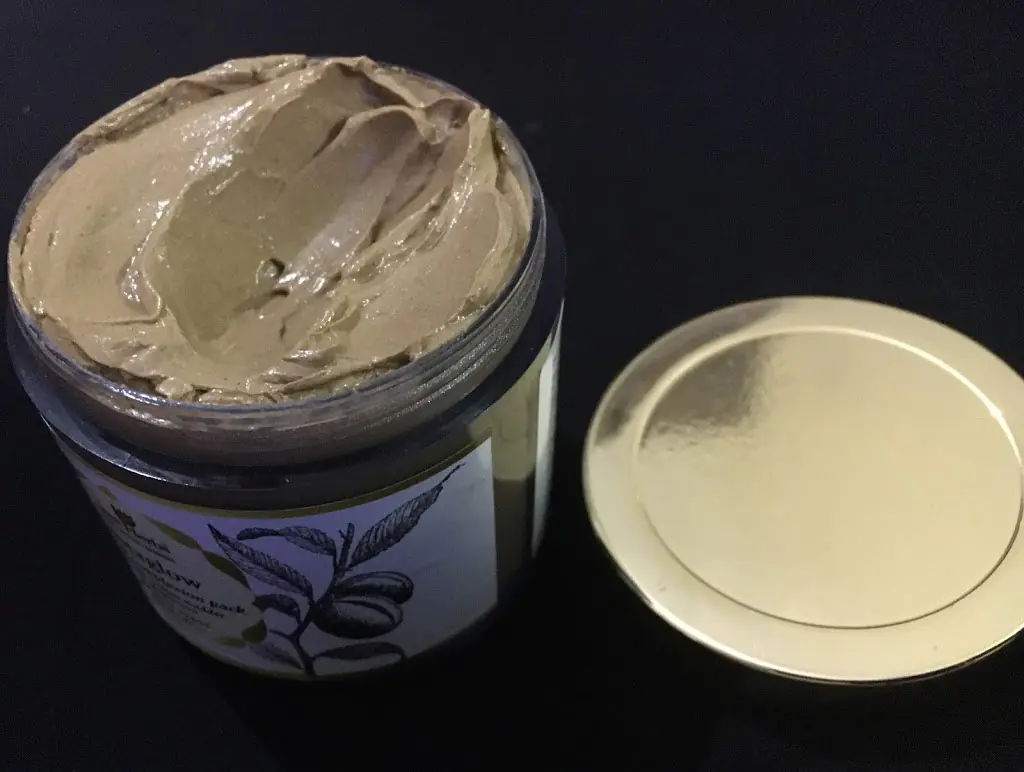
To obtain the required concentration, you can make a tincture of herbs or add them chopped, then the mask will also have a slight scrubbing effect. An anti-inflammatory mask based on chamomile and celandine allows wounds to heal faster and stimulates the skin regeneration process. Calendula and plantain also act as calming elements in the mixture.
In order for the mixture to be useful and start working, you need to make several masks and take a course. After systematic use, you can see the result and improvement in skin condition. Herbal face masks should not be stored for more than a few hours, since without the addition of preservatives, the beneficial properties are lost.
Baths and extracts
The method acts on the skin and removes minor redness, unevenness and tones. Steam baths have a cleansing effect, but if there are wounds or scratches on the skin, then it is better to avoid this method so as not to cause an allergic reaction and not worsen the condition of the face.
Diuretic herbs are often used in baths for swelling of the face; they are good for removing bags under the eyes and signs of fatigue. You need to hold your face over the bath for 5 to 10 minutes, but no more, so that the pores can tighten properly. Cosmetologists advise using ice after using steam; this will help the pores return to their original state faster, and a lifting effect will also appear.
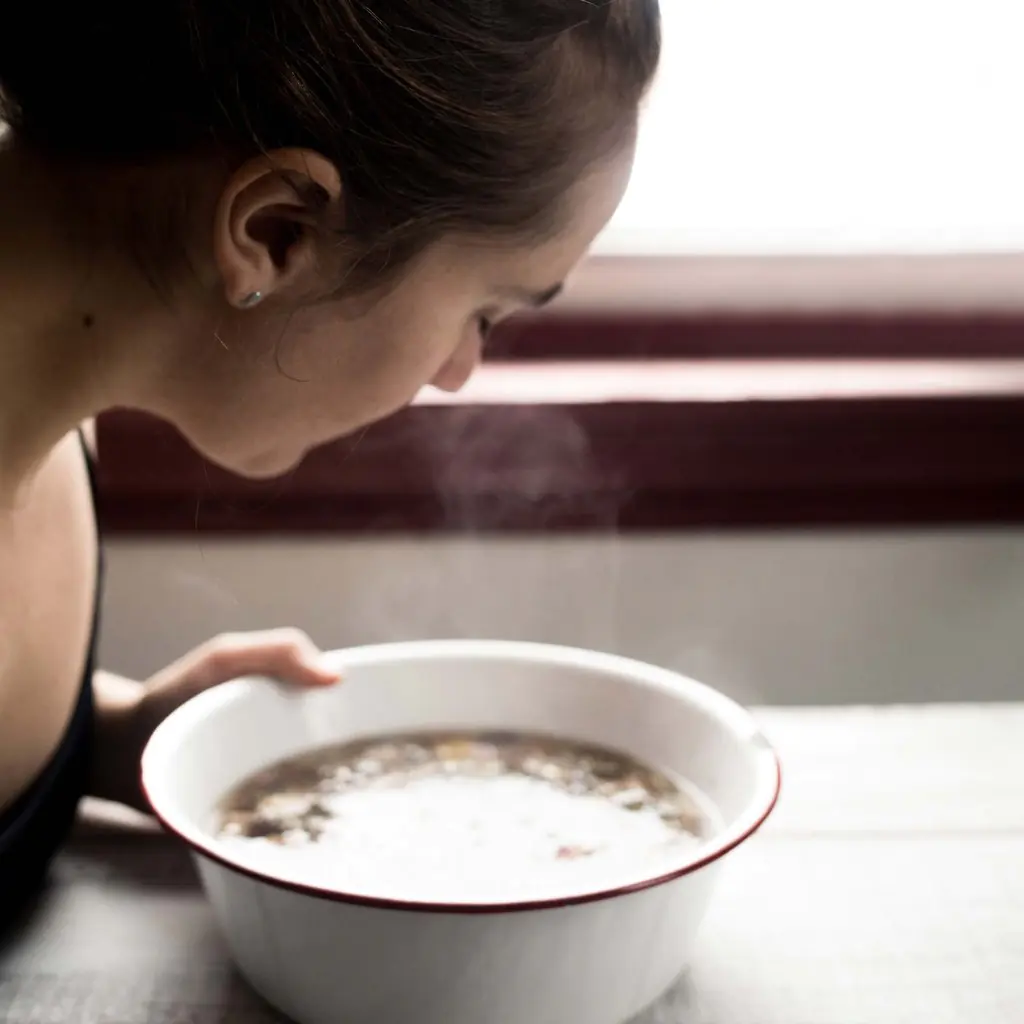
Alcoholic herbal extracts have a more local effect and help not only in the fight against pimples, rashes, blackheads, but also in the treatment of more serious skin ailments.
During use, you need to make sure that the skin does not dry out, and after using the extract, apply cream or moisturizing serum to your face. Various herbs can be used to prepare the extract. For oily skin:
For the combined and normal type, plantain, chamomile, and linden blossom are used. Cosmetologists believe that the same herbs can be used in extracts as in steam baths. You can wipe the skin with homemade lotions every day no more than twice.
Face creams
Skin care should be comprehensive and implemented through the use of products of different effectiveness and consistency. Creams perform the following functions:
It is impossible to imagine complete facial skin care without the use of special mixtures. Although organic cosmetics promise a natural composition, among the ingredients you can find many preservatives and substances that preserve the freshness of the cream. This does not always have a positive effect on the skin.
It is best to use natural remedies made by yourself. For dry and oily skin, the antioxidant herbs in the composition will be beneficial. If there are not enough components, the effect is weak, you can add a few drops of grape seed oil to the mixture and mix well.
For cell regeneration, herbs such as knotweed, lungwort, pikulnik and horsetail would be good in a night cream. For a day cream, a composition of chamomile, lingonberry, ginseng, ivy, and heather will be useful.
Skin compresses
Although this type of phytocosmetics is not used so often, its effect on the skin is not inferior to the effect of masks and creams. Compresses moisturize well, relieve swelling and redness, give the face an even tone and relax muscles. There are several types:
For cold ones, fresh herbal juice, decoctions and tinctures are used. They tone the skin and evenly nourish the cells, filling them with strength and energy. Hot compresses should have a temperature of no more than 50 degrees. Application time to skin is 10 to 15 minutes. After the napkin has cooled, you need to change it or soak it in a warm broth. The best herbs for the face can be found in pharmacies or you can collect them yourself.
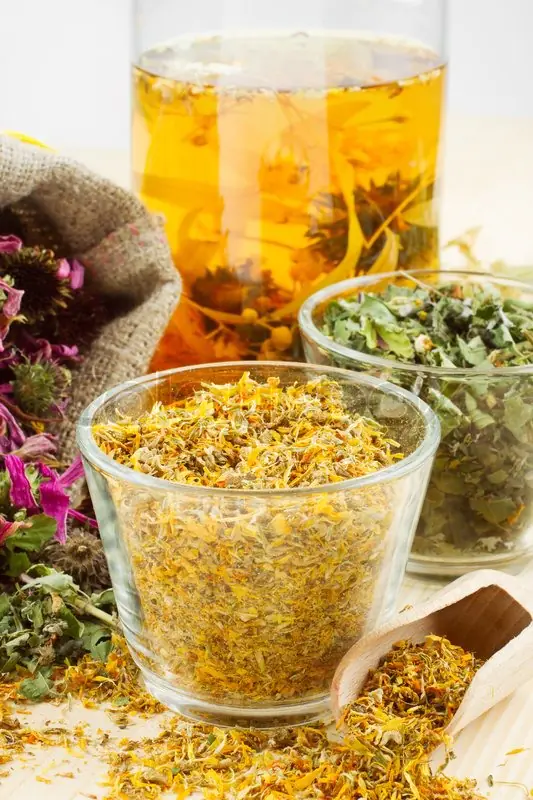
Contrasting ones are intended first to expand pores and eliminate minor imperfections on the skin, and then to tighten cells and tighten the face. Blanks with slits for eyes, nose and lips can be bought in cosmetic stores; their cost is low. Or, at home, use a regular towel for this.
Herb tea
This effect on the skin and comprehensively on the entire body from the inside. Herbal teas can heal the body and improve the functioning of its systems.
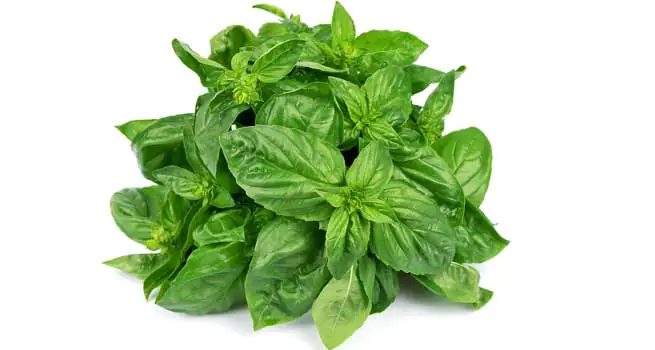
Many women mistakenly think that external influence can radically change the condition of their face and remove all minor problems. In fact, the cosmetic effect quickly passes, leaving behind the same imperfections and redness.
To treat skin, experts advise regularly drinking teas made from beneficial herbs and medicinal ingredients. Diuretic herbs for facial swelling gently remove fluid from the body without causing discomfort.
Cumin, dill, mint, thyme, chamomile and yarrow have a beneficial effect on the skin. Tea made from currant and cherry leaves not only strengthens the immune system, but also cleanses the skin.
A drink based on nettle and dandelion leaves cleanses the blood and fights rashes on the face. You can drink teas from several herbs or buy herbs at the pharmacy, but before doing this, it is advisable to consult a doctor.
Secrets of herbalists
A lot depends on the time when the herbs are collected. Firstly, the healing capabilities and level of nutrients in the composition. If the plant is in the growth zone, there is no need to collect it, because developed stems and leaves do not indicate usefulness.
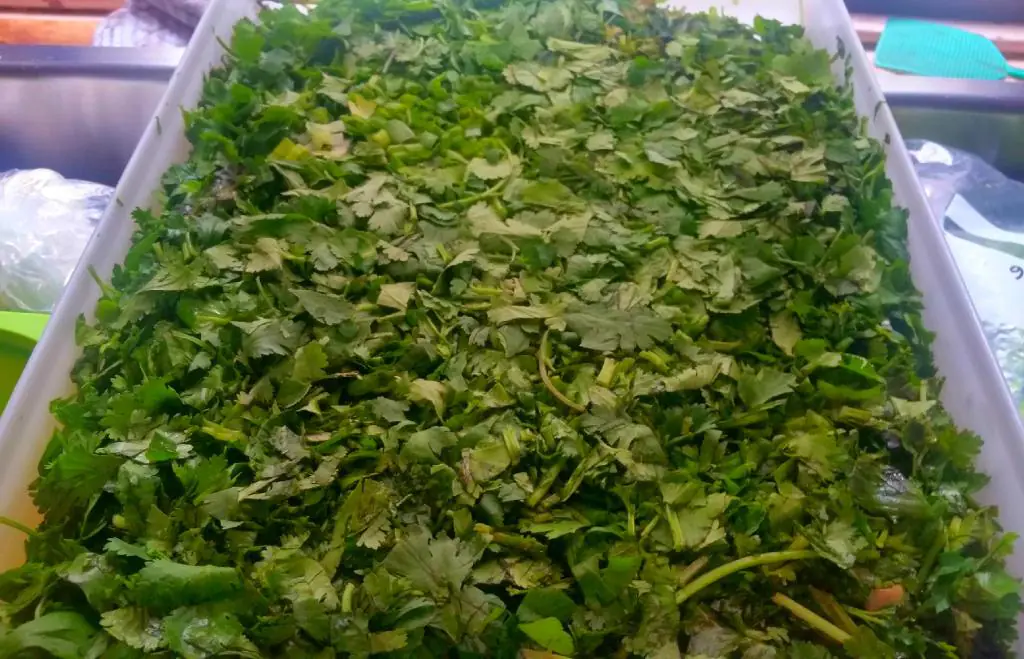
The optimal time for collecting flowers is considered to be the period from the fifth day from the beginning of flowering. For plants, this period increases from a week to 10 days. You can't pick herbs when the sun is hot. It is better to choose cloudy days without precipitation for this, when it is comfortable to move around and you can collect only the best plants, and not those that are already withering.
Different types of herbs should be collected in different sections of the bag. If you put everything in one bunch, then the effectiveness of the plants can be significantly reduced. Before drying, the plants must be washed well and cleaned of dirt and small bugs.
Dry the herbs in the sun, placing them in a thin layer on a dry, clean towel. Be sure to turn the plants several times a day so that the sun evenly warms the leaves and stems on both sides.
To protect against flies, use a bandage or thin translucent cloth. This will help protect the herbs from bacteria and contaminants. Two sunny days are enough to completely dry the herbs.
Rules of application
For a clean face, herbs are used in the form of decoctions and ice. These methods help to quickly get rid of pimples and redness. In the form of creams and masks, the effect will not be so immediate. The best way to find out which herb is suitable for your face is by determining your skin type.
You cannot combine components of different functionality in one product so as not to cause an allergic reaction.
If you create a product with a strong enough concentration, it may result in a withdrawal effect. To prevent this from happening, experts advise taking no more than a tablespoon of herbal mixture per glass of water. You can use a paste of fresh vegetables or fruits as a basis for creating a mask. Boil the herbs, grind them into a paste, or use the juice from a fresh collection.
You cannot add dry and fresh herbs to masks at the same time. The effect of use may not appear. Herbal teas are brewed from dry herbs, but one drink should not combine more than three components, since different spheres of influence can negatively affect the body's systems and harm it.
You can alternate the use of natural skin ingredients with purchased professional products. In this case, the effect will be noticeable and long-lasting, but frequent use is not necessary. We are talking about simply alternating and replacing one product with another so that the skin does not get used to it and receives truly comprehensive care.
Reviews of herbs for the face may vary, but it depends on skin type, use, problem and desired result. The selection of herbs for treatment is an individual process that should be handled by professionals.
Many women recommend using tinctures of linden blossom and chamomile for problem areas of the skin. Lotions made from plantain and celandine are also recommended to combat pimples and inflammation. There are also neutral reviews about herbs for the face, but we are talking about collecting plants and combining several components at once. Cosmetologists advise doing a small test on the skin before starting to use it to eliminate the possibility of negative reactions in the body.
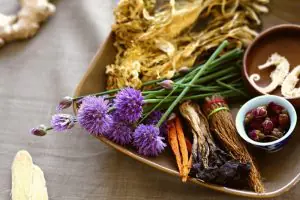
Many store-bought cosmetics contain herbs. However, the natural components in them can retain their beneficial properties for a very short time. Therefore, after some time, purchased masks and creams will no longer be as effective as initially.
It is possible to use extracts and infusions of herbs to your advantage, to make your facial skin clean and healthy at home, using simple recipes for cosmetic masks, lotions and compresses for these purposes.
Read in this article
Useful herbs for skin
Nature has provided many medicinal plants that are designed to help eliminate any imperfections in the dermis and preserve the beauty of the skin for as long as possible. But to use medicinal herbs for facial care at home, you do not need to buy the entire phytocosmetics department at a pharmacy or specialty store. To do this, it is enough to determine the skin type or the problem that needs to be dealt with (dryness, first wrinkles, acne or pigmentation).
For dry skin prone to allergies
The following plants are suitable for those with thin, dry dermis:
- oregano – perfectly moisturizes and soothes dry sensitive skin, has antiseptic properties;
- calendula – reduces inflammation, soothes irritated, allergy-prone dermis;
- thyme – charges with vitamins, moisturizes and gives freshness to tight, flaky skin;
- lavender – has an anti-inflammatory effect on tired, sensitive skin;
- yarrow – relieves itching and irritation.
Using an infusion of these herbs, you can prepare masks, cosmetic ice, or make baths for washing.
For oily skin
Decoctions from plants that contain organic acids, tannins and phytoncides will help reduce oiliness and dry out inflammation. To improve excessively oily facial skin, the following are most often used:
- aloe - the plant carefully cares for oily skin, prevents the appearance of acne and redness;
- nettle – works well to relieve redness on oily and combination skin;
- burdock root – helps to establish oxygen exchange in cells and also cleanse ducts;
- mint – reduces oily skin and gives it tone (can also be used for rejuvenation);
- plantain – treats acne and pustules, tightens pores;
- horsetail – dries and heals rashes;
- St. John's wort - the plant's restorative properties are highly valued in the fight against acne.
Young people with oily skin and youthful acne can use raspberry, immortelle and celandine leaves for facial care. Plants reduce oily shine, fill the skin with freshness and purity.
Herbs with anti-aging effect
Not only expensive creams with collagen can get rid of wrinkles and rejuvenate the skin. Nature also has many proven anti-aging remedies, for example, the following plants:
- coltsfoot - softens the dermis and evens out the tone of the facial skin, making it smooth and silky;
- rosemary – eliminates fine expression wrinkles and makes contour lines clearer;
- chamomile – thanks to its healing and antiseptic effects, the herb prevents the appearance of the first wrinkles and stops the aging process;
- radiola - restores tone to aging skin, gives the face a healthy, radiant appearance;
- sage - has high antioxidant properties, stimulates the production of new epidermal cells and, as a result, tightens the skin, making it fresher and younger.
For deep cleansing
All types of leather need daily cleaning. With the help of plants this can be done delicately and gently. Suitable for these purposes:
- succession - used to normalize cellular processes, deeply cleansing and toning the dermis;
- Nettle – due to its scrubbing properties, it is ideal for the care of oily and combination skin.
All these herbs can be included not only in masks, they can also be used in the form of baths or compresses to pre-steam the skin before cleansing or applying cosmetics.
Against age spots
Lemon juice is considered an excellent remedy that helps get rid of pigmentation. But before use, it must be diluted with water so as not to cause irritation. Instead of water, you can use infusions of the following plants:
- dandelion – effectively eliminates freckles and even very strong pigmentation;
- parsley – has whitening properties, makes skin tone more even and fresh.
You can collect and dry medicinal plants yourself. The main thing is that the product must be environmentally friendly and grow as far as possible from factories or road sections.
Knowing the properties of beneficial herbs, you can easily tidy up your facial skin and simply maintain its condition in the future.
Watch this video about herbs for different facial skin types:
Rules for use at home
Infusions and decoctions of medicinal plants can relieve the skin of many defects and premature aging. In order for the result to be as effective as possible, you must follow several rules for using them at home, as well as know the features of a particular recipe. To begin with, before using it in practice, it is important to familiarize yourself with the basics of phyto-cosmetology.
Basic recommendations for the use of medicinal plants:
- You can use herbs for the face in several ways: add them to masks, for daily washing, wiping or lotions, or prepare cosmetic ice.
- The first thing to do is to check for an allergic reaction on a small area of skin on your hand, and only after making sure that there is no reaction, apply the product to your face.
- If you have a favorite homemade mask, it can be easily improved by replacing the liquid component (milk, juice) with a herbal decoction.
- After a course of 10 - 15 herbal masks, you need to take a short break, and then change the composition of the product so that the skin does not get used to it.
- If the plants are collected independently, they don’t even need to be dried; they can be used fresh.
- All decoction recipes are best applied immediately or a few hours after preparation.
- It is better to use glass or ceramic containers to store cosmetic compositions.
- If there are fresh scratches, acne, inflammation, scars or traces of recent plastic surgery on the face, it is better to postpone the procedure with medicinal herbs.
- The collected plants can be stored for two years, in a dry place out of reach of sunlight.
Leave any herbal mask on your face for no more than 30 minutes. Because all useful plants are biologically active only for half an hour.
Recipes for skin
Folk cosmetology is based on the use of natural raw materials and healing ingredients. Having prepared a face mask from herbs, you do not need to worry about possible harm to the body. But everything should be in moderation. From time to time it is necessary to alternate plants and procedures (for example, change masks to tonic or wiping with ice to lotions), and also give the skin a little rest.
For rejuvenation
Mature skin with noticeable wrinkles can be pampered with masks that simultaneously tighten, moisturize and saturate the dermis with nutrients. Therefore, in addition to herbs, cosmetic compositions may contain vegetable or milk fats.
Mint cocktail
The composition of this mask helps fight the signs of aging, and thanks to dandelion it will get rid of pigmentation and freckles.
Compound:
- mint leaves - two teaspoons;
- dandelion leaves - two teaspoons;
- liquid honey - one teaspoon;
- tea tree oil – a few drops;
- egg - one piece.
- Grind fresh mint and dandelion.
- Add raw egg to the leaves.
- Melt honey and tea tree oil in the microwave or in a water bath.
- Mix honey with the rest of the ingredients and mix well.
- Apply to face, rinse after 20 minutes.
Tea tree oil moisturizes dry skin and does not create a greasy sheen on oily skin. Therefore, the product is universal and suitable for all skin types.
Anti-wrinkle mask with sage
The procedure allows you to rejuvenate aging skin by activating elastin synthesis in cells and saturating it with vitamins.
Compound:
- sage - two teaspoons;
- cottage cheese – 10 g;
- egg yolk - one piece.
- Pour sage with a small amount of boiling water and mash in a mortar.
- Gradually add the remaining ingredients.
- Apply the mixture to your face (from bottom to top) and leave for 15 - 20 minutes.
- After a while, remove the remains with a napkin.
After seven to eight sessions, a noticeable lifting effect is noticeable.
Rubbing with frozen sage infusion will also help rejuvenate your face and relieve puffiness.
For people with rosacea on the face, such procedures may be contraindicated; it is better to consult a dermatologist or cosmetologist.
Anti-aging mix
The procedure will improve your complexion, tone your skin and help remove antioxidants.
Compound:
- St. John's wort - two teaspoons;
- coltsfoot - two teaspoons
- mint - two teaspoons;
- chamomile – two teaspoons;
- sage - two teaspoons;
- sour cream - one teaspoon.
- Mix all the herbs in one container and add a small amount of boiling water.
- Wait 20 - 25 minutes for the mixture to steam and drain the liquid.
- Combine the mixture with sour cream, mix well and spread over the face, avoiding the area around the eyes.
- Lie down and cover the mask with a towel. Wait 15 - 20 minutes.
- Rinse off the composition with warm water.
This procedure can be done twice a week in winter and once every seven days in summer.
For hydration
To prevent all manifestations of dry dermis, you first need to soften and moisturize it, get rid of flaking, and also reduce inflammation.
With yarrow
Yarrow will perfectly relieve irritation from inflamed skin, and sage activates the production of new cells, which speeds up the healing process of areas with peeling.
Compound:
- Yarrow flowers - two teaspoons;
- Sage leaves - two teaspoons;
- Hercules flakes - two teaspoons.
- Egg yolk – one piece.
- Grind the sage and yarrow using a mortar.
- Grind the flakes in a coffee grinder.
- Combine herbs with yolk and flakes. Mix everything well.
- Apply the composition to the face (except for the area around the eyes) for 20 - 25 minutes.
- Wash off the mask with warm water without using cleanser.
If the skin is severely dry and flaky, the mask can be used every other day. Later, for prevention, reduce the procedure to once a week.
Moisturizing mask with coke oil
In combination with honey and coconut oil, the herbs have tonic properties. Cells are saturated with oxygen and active components that prevent dryness, flaking and itching.
Compound:
- thyme - one teaspoon;
- rosemary - one sprig;
- liquid honey – 10g;
- coconut oil - five drops.
- Grind the herbs in a mortar.
- Combine them with honey and coconut oil.
- Steam your face by washing it with hot water.
- Apply a good layer of the mask onto the steamed dermis. Leave for 15-20 minutes.
- Rinse off the composition with running water.
Due to the fact that after using the mask, facial vessels are strengthened, the rosacea network is reduced, and the skin tone becomes even and beautiful.
Herbs with sour cream
The procedure not only relieves irritation from sensitive skin, but also perfectly smoothes expression lines and refreshes the complexion.
Compound:
- chamomile - two teaspoons;
- hops - two teaspoons;
- calendula – two teaspoons;
- fat sour cream - one teaspoon.
- Mix the herbs in one bowl and pour boiling water over it.
- Cool the infusion to room temperature and combine with sour cream.
- Apply to face for 20 - 25 minutes.
- After a while, wipe the mixture with a napkin.
It is recommended to use the herbal infusion once or twice a week.
For elasticity
In order for the skin to be tightened as long as possible, and the contours of the cheekbones and chin to have expressive lines, do not forget to regularly take care of the skin of the face, saturate it with vitamins and minerals, use tonic masks, and fill the cells with oxygen.
Chamomile flower mask
Chamomile is a plant that is best suited for mature skin. The herb gives the skin elasticity, triggers regeneration processes, and also restores cellular structure.
Compound:
- chamomile flowers - four teaspoons;
- full-fat kefir - four teaspoons;
- egg - one piece.
- Grind dried chamomile flowers in a coffee grinder.
- Add kefir and raw egg to the chamomile.
- Apply the mixture all over your face for 20 - 25 minutes.
- Rinse off with warm water.
Mask-compress with sage
The product is indicated for eliminating defects in mature problem skin prone to acne.
Compound:
- sage - four teaspoons;
- sesame oil – five drops.
- Steam the sage in boiling water and let cool to a temperature of 38 - 40 C.
- Make a paste from the grass, and then add sesame oil to it.
- Apply the mask to your face and cover it with a steamed towel.
- Leave for 20 minutes.
- Dry your face with a towel.
A sage compress will perfectly tighten the oval of the face and also protect the dermis from photoaging. This mask is relevant not only in the cold season, but also in the summer.
Brightening mask with dandelion
Uneven tone and gray complexion can be corrected using this recipe.
Compound:
- dandelion leaves - six teaspoons;
- liquid honey - four teaspoons;
- non-carbonated mineral water – four teaspoons.
- Grind the dandelion and pour cold mineral water into it.
- Heat the honey a little and combine all the ingredients.
- Distribute the resulting paste over your face.
- After 25 minutes, wash with clean water.
As a result, after just a few procedures, the correct distribution of melanin throughout the skin is restored - and spots on the face disappear.
For acne
Acne and redness most often appear on oily skin with enlarged and clogged pores. To solve this problem not only on youthful, but also on mature skin, you need to pay attention to herbs that contain phytoncides and flavonoids.
Cleansing mask with clay
This product deeply cleanses the dermis, gets rid of blackheads and sebaceous shine.
Compound:
- aloe juice – 10 ml;
- Moroccan clay – 10 g;
- avocado oil – 12 drops.
- Squeeze the juice from aloe and then mix it with clay and oil.
- Distribute the mixture over the face, avoiding the area around the eyes.
- Leave for 15 - 20 minutes, rinse with running water.
Aloe in combination with other components has a caring effect, normalizes intracellular processes and relieves swelling.
Based on wormwood decoction
The secret of wormwood decoction is that, penetrating into the pores, the product acts on the skin from the inside, regulating the functioning of the glands and protecting the skin from aging.
Compound:
- wormwood - four teaspoons;
- oatmeal - four teaspoons;
- lemon zest - two teaspoons;
- fat milk, water.
- To create a decoction, boil the wormwood in 200 ml of water over low heat for several minutes.
- Cook thick oatmeal in milk.
- Add lemon zest to the porridge and dilute it with a decoction of wormwood.
- Apply the mixture to the skin.
- Wait 20 - 25 minutes, rinse off any remaining product with warm water.
A wormwood mask starts the processes of healing and rejuvenation of the dermis, eliminates excessive oily shine and demodicosis.
Mask with nettle and St. John's wort
Having healing properties, St. John's wort is useful for fighting acne and purulent rashes. Nettle will eliminate redness and hide the effects of acne.
Compound:
- St. John's wort flowers - two teaspoons;
- nettle leaves - two teaspoons;
- low-fat sour cream - four teaspoons;
- lemon juice - two teaspoons.
- Grind nettle and St. John's wort in a coffee grinder.
- Mix herbs with sour cream, squeeze fresh lemon juice.
- Place on face for 20 - 25 minutes.
- Afterwards, wash your face without using any cleanser.
Knowing the properties of medicinal herbs, you can do without many store-bought skin care products. After all, natural herbal treatments are harmless and beneficial to the body. And so that the results do not keep you waiting, the plants should be used regularly, following the correct recipe.
Useful video
To learn how to make face masks from herbs, watch this video:
What are the most beneficial herbs for the face? A brief but comprehensive review of medicinal plants will allow you to choose exactly the one that will quickly and effectively cope with the problem that has arisen. Indications for their home use, rules of use and the most effective recipes can be found here.
Medicinal herbs are a large group of plants, parts of which are used as raw materials for preventive and therapeutic purposes in medicine and cosmetology. You can make them out of them wonderful masks for facial skin that can solve a variety of problems - from smoothing out wrinkles to eliminating the most inflamed acne.
Read a sea of interesting publications on the topic of fashion and beauty in the online magazine bhub - a must read for the young and stylish!
You just need to know how to properly use herbs for the face and what specific properties each of them has. At the same time, it is not at all necessary to know how to properly collect, store and dry medicinal plants, because pharmacies sell preparations that are ready for use.
Review of herbs for facial skin
There are a great variety of medicinal herbs for the face, and it is very difficult to understand them. In order not to get lost in this diversity, it is enough to determine which problem you most want to get rid of. It could be acne or dark spots, wrinkles or double chin, dry or oily skin. To eliminate the misfortune that is interfering with your life, you need to select the herbs themselves.
- Aloe - against acne and for oily skin care.
- Butterbur - control of the sebaceous glands.
- Immortelle - against various types of inflammation on the face.
- Birch - for oily skin types.
- Oak - eliminates greasy shine from the face.
- Oregano - for moisturizing.
- St. John's wort - has anti-inflammatory properties, useful against acne and acne.
- Calendula - invaluable for inflammatory processes, rashes, allergies on the face, soothes irritated skin, moisturizes.
- Nettle - one of the best care products for oily skin with cleansing properties.
- Lavender - has a calming effect on irritated, tired skin.
- Linden - against greasy shine on the skin.
- Burdock (root) - useful for oily skin.
- Coltsfoot — makes the skin smooth and silky, eliminates rashes.
- Mint - used against fat and excess sebaceous secretions.
- Parsley - has whitening properties.
- Plantain - treats oily skin and acne.
- Dandelion - against age spots.
- Rosemary - smoothes wrinkles and has a rejuvenating effect.
- Chamomile - the best anti-inflammatory and restorative agent: stops the aging process, prevents the early appearance of wrinkles, heals any acne and pimples.
- Rowan - has a highly effective cleansing effect: eliminates blackheads.
- Thyme - necessary for moisturizing dry skin.
- Series - used to treat allergies and various rashes on the face.
- Sage - has a lifting effect, makes the skin radiant and youthful.
- Horsetail - Recommended for oily skin care.
All these beneficial herbs for facial skin are just the tip of the iceberg in a huge sea. In fact, there are much more of them (in medicine there are more than 2,000 names of medicinal plants), but for home cosmetology these 20 will be enough.
If you have a box in your house with a miraculous collection of one of these herbs, be sure to take advantage of this fact to put your skin in order, with which some problems constantly arise.
If they have grown so much that they are already interfering with life, select a specific medicinal plant for them: there are certain indications for this.
Indications for the use of medicinal plants
Very often the question arises, which facial herbs to use for a particular problem. In order to facilitate the search for the right raw materials, there are special indications in herbal medicine for home treatment of the skin with herbs. Use them to purposefully, and not accidentally, stock up on the herb you need.
- Herbsfor acne: aloe, immortelle, St. John's wort, calendula, lavender, coltsfoot, plantain, chamomile, string.
- Herbs for oily skin: aloe, butterbur, birch, oak, nettle, linden, burdock root, mint, plantain, horsetail.
- Herbs for dry skin: oregano, calendula, thyme.
- Anti-wrinkle herbs: coltsfoot, rosemary, chamomile, sage.
- Herbs with cleansing effect: rowan, nettle.
- Herbs against age spots: dandelion, parsley.
As can be seen from this list of indications, herbs for facial acne are one of the most numerous groups, and this is not surprising. Medicinal plants contain sufficient amounts of organic acids, phytoncides and tannins, which have anti-inflammatory properties.
They disinfect the affected skin, soothe irritation and localize, and then eliminate areas of inflammation. Therefore, for those with problem skin, herbs are recommended for mandatory use.
In adolescence, in the absence of allergies, medicinal preparations can also be used to treat juvenile acne. The maximum benefit from herbs can be achieved if everything is done correctly.
Rules for using herbs
In order for herbs for the skin to fulfill the task assigned to them, you must be able to correctly prepare a medicinal decoction (infusion) from them and correctly use it at home. There is no need to think that medicinal plants are absolutely safe and cannot cause harm.
Those who are familiar with the basics of herbal medicine know that they sometimes cause the most terrible allergic reactions even when used externally. Therefore, first you need to familiarize yourself with the basics of home cosmetology using herbs, and then put this whole thing into practice.
- The simplest solution to any skin problem is to buy a herb that corresponds to the indications (in the form of a dry collection) at the nearest pharmacy, study the instructions, brew, and use the resulting decoction for its intended purpose. Healing herbal infusions and decoctions for the skin can be added to any face mask.
- The most effective solution is to collect medicinal raw materials yourself in a forest, field, summer cottage - in any place that is at a sufficient distance from the city, factories, industrial zones, and major highways.
- Check the grass to see if it contains allergens for your skin.
- If the herbs were collected independently, they can be used immediately, fresh: it will even be healthier, because they will still be full of various substances. You can stock up on them for future use to enjoy their cosmetic effect on long winter evenings. Collected medicinal plants should be dried in ventilated, dry rooms where direct rays of the sun do not penetrate. At the same time, you need to constantly stir them so that they do not get stale and moldy. This will take two weeks - no less.
- One rule regarding the use of herbs for cosmetic purposes must be strictly followed. Fresh raw materials should be used immediately, within 1–2 days. The shelf life of dry herbs (if kept in boxes or paper bags) is no more than 2 years.
- A very important point is how to properly prepare herbal decoctions for the face (or infusions). First, you need to chop the plant: chop the fresh grass with a knife, and just grind the dry grass in your hands. Then pour the resulting powder (1-2 tablespoons) with boiling water (a glass) just removed from the heat. It is best to do all this in glass or ceramic containers. If you then close the potion with a lid and leave it for half an hour, the result will be a fragrant herbal infusion that is very beneficial for the skin. If you put it in a water bath for 20–30 minutes, you will end up with an equally healing decoction. All that remains is to strain both products and add them to homemade cosmetic masks.
- But most facial products still use crushed leaves or flowers of plants.
- In general, any face mask made from natural products that you are used to making at home can be made with herbs. To do this, it is enough to replace the liquid in their composition (water, juice, milk) with decoctions and infusions from medicinal plants in the same quantities as indicated in the recipes.
- It is recommended to do herbal face masks for problem skin - every other day, for oily skin - twice a week, for dry skin - once every 7 days. If decoctions of herbs for the skin are used as a regular prophylactic agent (against the premature appearance of wrinkles, to prevent the formation of acne, etc.), then such masks will be sufficient to do once every 10 days, since they are very powerful and effective in their effects on the epidermis.
- Skin can be treated not only with herbal masks. Another way to use medicinal plants for this purpose is to wash your face daily. The same prepared infusion or decoction is poured into a basin with filtered warm water (1 glass of raw material per 500 ml of water): it is enough to wash your face with the resulting solution twice a day.
- If you don’t have time to do such procedures, you can wipe your face several times a day with a cotton pad soaked in the prepared herbal decoction.
There are many ways to use herbs that are good for your skin. The main thing is to be able to select the right medicinal plant to solve your problem and use it correctly. In folk medicine and home cosmetology you can find many recipes for all kinds of herbal masks and tonics. The goal of each of them is to prolong the youth and beauty of facial skin.
Recipes for herbal face masks
Despite the variety and abundance of different recipes, you cannot get too carried away with herbs. You can start with a course of treatment with masks, then change the plant and start rubbing with cubes ice, after that, use a tonic every day, but again from a different herb. Everything should be in moderation.
- Dandelion against age spots
Grind dandelion leaves (3 tablespoons), add cold filtered (or boiled or mineral) water (2 teaspoons), melted honey until liquid (2 tablespoons).
- Wormwood against rashes
Prepare a decoction of wormwood, dilute with it (2 tablespoons) not yet cooled, thick oatmeal, cooked in fresh, full-fat milk (take the same amount as the decoction of wormwood), add chopped lemon zest (2 tsp).
Keep the aloe leaves in the refrigerator for 1–2 weeks, squeeze the juice out of them (tablespoon), mix it with natural oatmeal crushed into flour (2 tablespoons).
- Chamomile for dry skin
Grind chamomile flowers (2 tablespoons), mix with fresh, natural, preferably full-fat kefir (in the same quantity), add a raw egg.
- Yarrow to improve complexion
Grind fresh yarrow flowers and sorrel leaves (1 tablespoon each), add to them rolled oats flakes crushed into flour (1 tablespoon), raw yolk (you can use a whole egg).
- St. John's wort for acne
Chop fresh leaves of young nettle and flowers of St. John's wort (1 tablespoon each), add fresh, low-fat sour cream (2 tablespoons), concentrated lemon juice (no more than 1 teaspoon).
- Mint for tired skin
Grind fresh dandelion and mint leaves in equal quantities (1 tablespoon each), mix with a raw egg, add honey melted in a water bath (1 teaspoon).
- Plantain for oily skin
Wash fresh leaves of ordinary plantain, chop, mix thoroughly with oatmeal flour in equal quantities (1 tablespoon each).
You need to know what beneficial herbs to use for the face so that your personal cosmetologist is not harmful chemicals from store-bought tubes, but Mother Nature. This will quickly affect the condition of the skin: it will become smoother, cleaner, tighter and more elastic. The aging process will be slowed down, and there will be no need to be afraid of the appearance of premature wrinkles and sagging folds. In order for all this to become a reality, medicinal plants for cosmetic purposes must be used regularly and correctly. Then the results will not take long to arrive.



